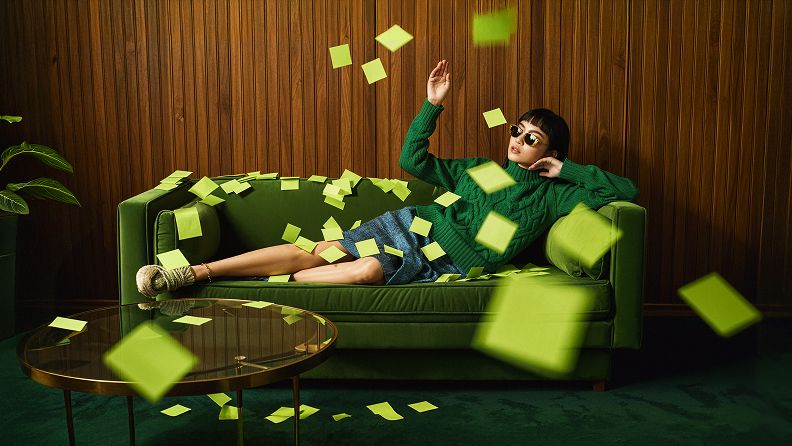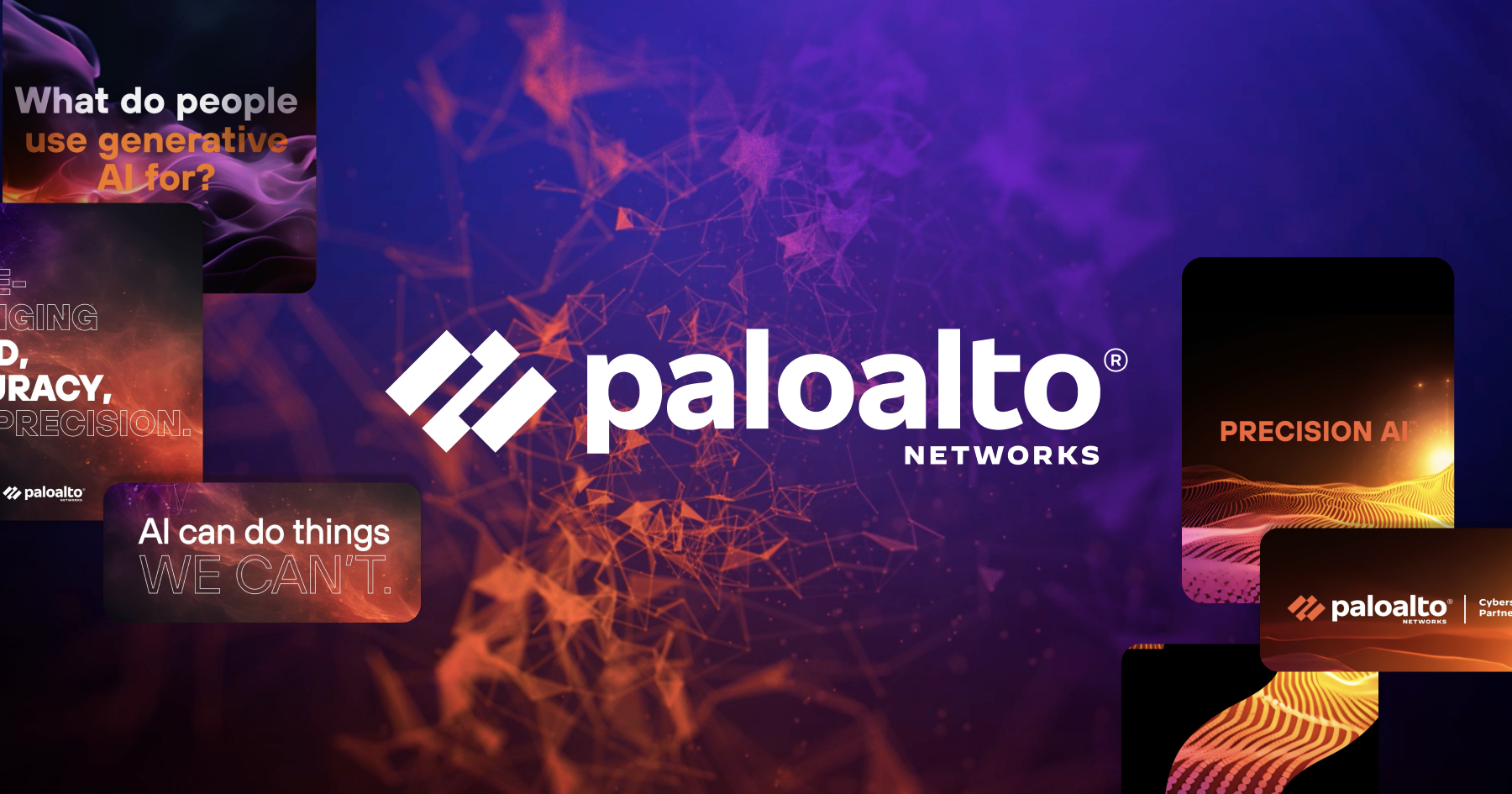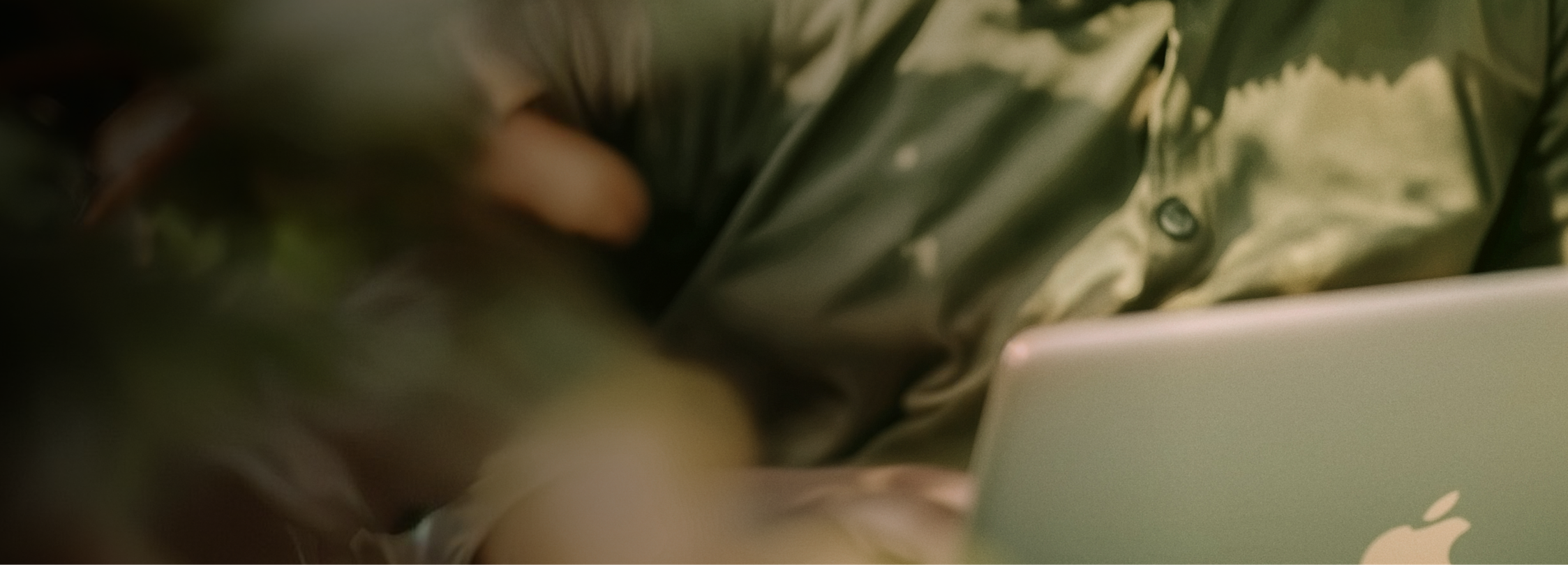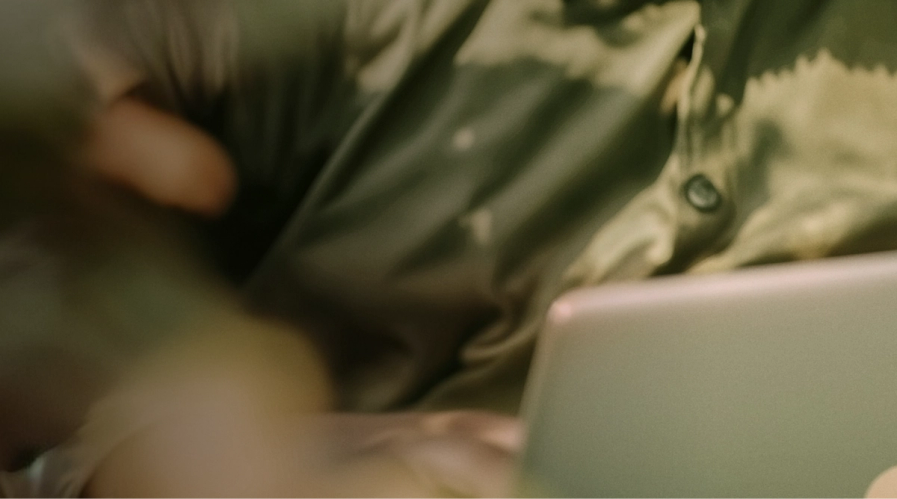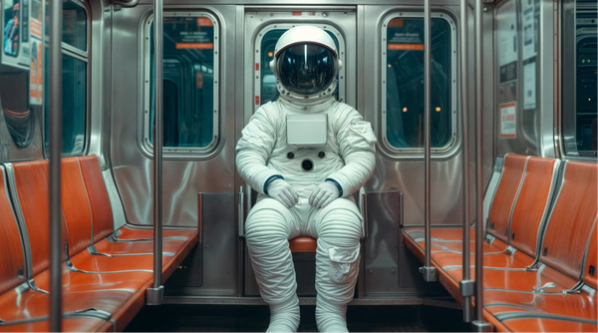50 Big Brands that Did a Major Logo Redesign in 2025 (& What We Learned)


50 big brands revamped their logos to stay relevant, modern, and aligned with evolving trends. Logo redesigns are strategic moves that help companies reflect growth, appeal to new audiences, and ensure their visuals are clean, adaptable, and impactful across digital and physical platforms. From subtle tweaks to bold transformations, these updates demonstrate the power of simplicity and modernization in keeping a brand fresh and memorable.
Imagine if every company sign you saw was black and white, in Times New Roman, 12-point font. Not only does that sound like a very boring world to live in, but it would be incredibly hard to differentiate one business from the next.
Sure, the names are all different, but they get lost in a sea of bland, same-shaped signage. One store seems much like the other. And then one guy has an idea—it's time for a logo redesign! He changes his sign to a 40-point font and colors it red. When you look down the street now, there will be one logo that sticks out.
Logos are immediate brand messages companies send to consumers. They display the company’s personality, and when done right, make a company memorable. A good design can have staying power—but sometimes it stays around too long, and the familiar loses its shine. That’s when companies look at the reasons big brands change their logos and consider a redesign.
Sometimes the logo change is shocking to the public and draws much-desired brand attention, and sometimes, the transition is subtle but purposeful.Generally the logo has to be in perfect tune with the other brand factors and you can see some good examples of great brand identity examples here.
Why Big Brands Invest in Logo Redesigns in 2025
A logo redesign is more than just a visual update—it’s a strategic move that reflects a company’s growth, evolution or desire to stay relevant in a competitive market. Major brands often invest in logo redesigns to signal a shift in their identity, appeal to new audiences, or align with modern design trends.
In addition to relevance, logo redesigns often accompany larger brand transformations. Whether it’s a merger, redefined company mission, or digital-first strategy, a new logo serves as a powerful signal of change to stakeholders, employees and customers. Superside understands the complexities of redesigning logos for large brands, ensuring that every element—from color palettes to typography—aligns perfectly with the company’s new direction while preserving brand recognition.
The Role of Simplicity and Modernization in Logo Design
One of the biggest trends driving logo redesigns is the shift toward simplicity and modernization. Many big brands are opting for cleaner, more versatile logos that can scale seamlessly across platforms—from billboards to social media avatars.
Simplified logos tend to be more memorable and timeless, eliminating unnecessary elements that might feel cluttered or outdated. In 2025, brands across industries embraced minimalistic approaches, favoring bold, flat designs over skeuomorphic or overly stylized logos.
This shift is driven by the need for consistency in a digital-first world. Logos must adapt to smaller screens, dynamic content and fast-scrolling users while maintaining their impact. Brands like Google, Mastercard, and Spotify have already proven that modernized, streamlined logos improve visibility and brand recall. At Superside, we specialize in helping brands reimagine their logos with simplicity and scalability in mind—balancing aesthetics, functionality, and emotional impact to create logos that stand the test of time.
50 Brands With Logo Redesigns in 2025
Logo redesigns don’t have to be scary. Let’s take a look at some of the best creative redesigns that brands have undergone in recent years—perfect for sparking inspiration for your next big refresh!
1. Dunkin' Donuts
Why they changed: Dunkin’s familiar, “America runs on Dunkin” tagline aligns with the new moniker, changed from Dunkin' Donuts. The transformation comes as Dunkin' seeks to expand food and beverage options and promote the brand as a food stop at any time of the day.
What we like: Dunkin' kept their familiar colors and font they have been using since 1973.
2. Uber
Why they changed: Uber’s logo has gone through several iterations, but when they changed to a half-coin-looking image, consumers were confused. Uber realized this and refashioned their logo into a straightforward, lay-it-all-bare icon.
What we like: The logo’s direct, simple approach means Uber is more familiar and can’t be mistaken.
3. Santander
Why they changed: Santander needed to update their logo to keep up with financial branding trends and bring a more dynamic emblem to the digital world. As they pushed their digital options, they also designed something that stands out against the screen.
What we like: Santander flipped the colors—from white writing on a red background to red writing on a white background—which made it easier to read and optimized for digital use.
4. Century 21
Why they changed: Century 21 ditched the complicated logo they had before in favor of two new bold, striking, simple options. They kept the color palette they used previously—black and gold—but gave it a modern touch.
What we like: Century 21 is a familiar brand, so adding an option as simple as C21 boosts the relevancy of the logo.
5. US Open
Why they changed: Following current branding trends, US Open dropped their metallic, multi-colored logo from years past in favor of a flat, tri-color option. The logo is meant to match the new branding of the tournament that aims to modernize the event.
What we like: The bold blue background is juxtaposed by the simplicity of the flaming tennis ball.
6. Animal Planet
Why they changed: Animal Planet wanted to redesign their logo to represent their brand reaching across the world. It needed to translate globally, so they replaced the familiar lettering with an elephant that captures the personality of the company.
What we like: The simple design is just what Animal Planet needs to go global—plus, the elephant is cute.
7. MailChimp
Why they changed: MailChimp maintained their adorable mascot in this alteration that saw the logo go from a white background with a colorful monkey and script writing to a simple yellow and black design. They wanted to showcase a more sophisticated look.
What we like: The mascot is integral to MailChimp’s brand, so it’s great they kept it when many other companies are doing away with that type of art.
8. Google Adwords
Why they changed: Google Adwords changed not just their logo, but their name. The newly titled Google Ads needed a logo that went with Google’s full suite of advertising solutions. This logo echoes that.
What we like: Google Ad’s bold use of color tells the audience that there are many solutions.
9. Comfort
Why they changed: Comfort knew it was time for a more modern logo, so they updated it to be more closely aligned with the refreshing, comforting feeling you get when you stay at their hotels.
What we like: The use of complimentary colors makes the logo inviting and modern.
10. Ogilvy
Why they changed: The original logo was a handwritten, black and white image of the company’s signature drawn by Ogilvy’s founder. They paid homage to that with the choice of serif font, and updated the colors to something eye-catching and modern.
What we like: The name of the company is easier to read with a typeface that is strong.
11. Balmain Paris
Why they changed: The new brand logo for Balmain Paris combines the B and the P into a dynamic monogram that can be used alone or with the moniker below. Balmain sought to simplify the typeface of their logo while adding a flourish.
What we like: They maintained their color scheme which simplifies the complex logo.
12. The Guardian
Why they changed: The Guardian doffed their multi-colored logo for a more modern feel. Instead of complicating the logo, The Guardian brought it down to basics, so you can focus on the news.
What we like: The plain black and white new logo is more suited for the future of The Guardian as a serious player in the news.
13. Slate Magazine
Why they changed: Slate’s change from a sentence-case purple font to a bold, all-caps dark purple pushes the modernity of the company to the forefront. The half-A is also a stylish addition.
What we like: The new style is bold and strong and shows how intense this online magazine is.
14. Diet Coke
Why they changed: It took Coca-Cola 35 years to decide Diet Coke needed a new logo. When they finally updated it, they maintained the colors and font and laid the white font down over a deep red line.
What we like: The design follows trends that have white lettering on red backgrounds, and the way it stretches to the top of the bottle makes it look like a banner for the company.
15. Sky News
Why they changed: The new Sky News logo minimizes the design of the previous logo and backs off the all-caps, bold look. Now, the font is curvaceous and distinctive which echoes better the branding on the website.
What we like: The streamlined logo follows the simplistic branding trends today and brings a hip, young vibe to the brand.
16. 70th Emmy Awards
Why they changed: The 70th annual Emmy awards required a standout design that promoted the style, excitement, and glitz of the event. So, instead of going with plain text, the designers created a stunning graphic image that represents the event flawlessly.
What we like: The silver and gold against the dark blue is sophisticated and high-class.
17. Toys ‘R Us
Why they changed: As Toys R Us planned their revival in the American market, they needed an update to their logo which has had various versions over their 69-year history. The logo has always emphasized the backward R, and the new one ket this trademark, placing their iconic star as the hold in the R. They also simplified their color palette, so it looks fun and cohesive.
What we like: They didn’t go to extremes with the changes. Just a single color change and the switch-up with the R gave the company a fresh look without disappointing Toys R Us fans everywhere.
18. FC Barcelona
Why they changed: In its 119 years, FC Barcelona’s logo has changed 10 times. In this 11th change, FCB decided to bring their logo into the modern world. They notably removed the FCB lettering, maximized the lower vertical lines, and removed the black outlines around the inner shapes.
What we like: The new logo also has updated colors, lightening the blues and reds and darkening the yellow so that the colors really pop.
19. Burberry
Why they changed: For the first time in 20 years, Burberry decided to update their logo. They followed the trend of ditching the mascot and opted for a simplified look.
What we like: Their black lettering on white background is sleek and sophisticated, just like the brand.
20. American Express
Why they changed: It’s been 40 years since American Express had a logo change. They didn’t change much when they finally took the plunge, but they did follow the branding trend of creating a flat icon. This took the place of their radial gradient. They also enhanced the lettering that will look good large or small.
What we like: The design company also created a logo for the company’s nickname “Amex” that keeps the same design and reinforces the company’s branding.
21. John Lewis
Why they changed: Established in 1864, John Lewis is a department store chain whose logo has undergone several changes. One branding point of the company is that their employees are also shareholders—owning stake in the company and being called “partners.” To promote that further, the company added “& Partners” to their logo, simplified the font, and created dynamic black lines that lead into it.
What we like: The inclusion of their employees as part of the company is a powerful statement from John Lewis about how they care for their workers.
22. Weight Watchers
Why they changed: No longer just a weight loss brand, Weight Watchers changed their moniker to WW which promotes the company as a wellness brand. The redesigned logo scraps the gradient from their older version and stacks the Ws as if to say “Wellness = Weight Loss.”
What we like: Blue is a perennial favorite to use for a sleek design, and WW’s logo allows for breathing space between the white Ws and the edges of the circle.
23. ClassPass
Why they changed: Classpass is a fitness company that was founded in 2013. Six years later, they decided to update their logo with a new color, curvier font, and a symbol that represents movement.
What we like: Following the lowercase trend seen throughout 2018, Classpass nixed the all-caps version of their name which makes the brand more approachable.
24. Rolling Stone
Why they changed: Rolling Stone’s 20-year-old logo was due for an update, and it was redesigned by their previous logo’s designer. Opting to follow today’s trend of simplification, the designer removed the black and white outlines around the letters, but maintained the font.
What we like: Removing the outlines cleaned up the logo and made it more pleasing to the eye against a white background.
25. Rotten Tomatoes
Why they changed: In nearly 20 years, Rotten Tomatoes has used the same yellow logo with funky symbols as letters. When the time for a redraw came, they cleaned up the symbols—making the tomato look more like a tomato—and repositioned those images so they even out the logo. They also shifted to a more traditional tomato red color.
What we like: The cleaned up font and symbols showcase a more professional look, but the font keeps the fun feeling we get from the old logo.
26. Pepto Bismol
Why they changed: Since 1919, Pepto Bismol has had some logo updates—about four to be exact. This fifth rendition followed the trend of getting rid of drop-shadows and flattening the overall look. They also opted for a new font.
What we like: Maintaining the familiar yellow and pink colors, Pepto remains true to their branding.
27. Kijiji
Why they changed: Based in Toronto, Kijiji launched their online classified ads website in 2005. Seeing a change in logo trends to a flatter, simplified image, Kijiji got on board. They filled in their colorful circles and updated their font to a simplified sans-serif version.
What we like: The font is easier to read, and the colorful bubbles keep the playfulness of the brand.
28. Houzz
Why they changed: In Houzz’s 10-year history, they had maintained their modern, geometric logo, but in 2018, they decided it was time to refresh it. Their fun symbol that looks both like an H and a house maintains their brand colors, and the heavier font weight helps the moniker stand out more.
What we like: This logo is all about that symbol. Their previous diamond shapes that formed a letter H didn’t do much to speak to the company’s platform as a home design inspiration website, but the new symbol does.
29. Flipboard
Why they changed: Flipboard decided to update their logo after eight years. The F symbol is meant to represent a window, so they did something revolutionary and made the F transparent, so now it can be set on top of other images and act as a real window. They also reversed the script on lowercase, curvy letters, opting instead of all caps and sharp edges.
What we like: Flipboard flipped the script on the lowercase trend which makes them bold and different.
30. GoDaddy
Why they changed: In 22 years of logo redesigns, one thing has remained consisted with GoDaddy—the little, squiggly-haired ginger man wearing a star on his head and funky sunglasses. He is iconic for the brand which decided 2018 was a good year to ditch him. Opting to focus on the name instead, GoDaddy maintained their old font and updated the color.
What we like: While we will miss little ginger guy, GoDaddy symbolized their commitment to professional websites by following the trend of simplicity.
31. DuPont
Why they changed: 112 years is a long time to look exactly the same, but the iconic DuPont logo waited that long to get a fresh look. They removed the oval surrounding the name opting instead of two symbols that define the oval look of the logo. They also made the font, which they kept the same, a heavier weight so it stands out.
What we like: This simplified logo is refreshing because it removes the crowding caused by the oval and emphasizes the moniker.
32. Slack
Why they changed: Slack shocked people when it updated its logo in January 2019. So, okay, that isn’t 2018, but we would be remiss if we didn’t mention this so-close-to-2018 change. They updated because, put simply by the company, they thought their previous version was awful.
What we like: Slack’s simplified flower motif harmonizes its colors just as the company synchronizes workplace communication.
33. Firefox
Why they changed: Firefox has gone through a revolution in recent years, so it stands to reason they would release new logos along with their new browsers. They’ve got two new versions, one in their iconic fox tail swirl pattern and one symbolizing a fox head. They’ve also updated the colors from a warm palette instead of complimentary orange and blue from their previous version.
What we like: Both designs are vastly different than the previous version, but even so, you can tell instantly who they belong to as the bright orange was maintained.
34. Nike & Undefeated
Why they changed: Nike and Undefeated released a new logo ahead of their new sportswear collection “The Fives.” The graphic background was added, and the logo branded white. This logo drew some criticism, though, when Twitter users compared it with the Naval Academy’s logo.
What we like: The white against blue is on trend with what we’re seeing from other logos in 2018.
35. Evernote
Why they changed: Following the black font on white background trend, Evernote updated their logo. Previously, the lettering was green and the elephant mascot, Mads, was black. Now, the emphasis is on the company name and Mads is the fun addition that defines the logo.
What we like: Mads’ color is darker than the green used previously for Evernote, so against a white background he is easier on the eyes.
36. Papa Johns
Why they changed: After controversy and the highly-discussed firing of their CEO, Papa John’s was due for an update, so they could put the past behind them and move to the future. They did what many others did and simplified their font, removed drop-shadows, and got rid of the apostrophe that showed possession.
What we like: The logo maintains the company’s signature colors, but modernizes the moniker, removing the distracting outline and banner.
37. IHOP
Why they changed: We all know now that IHOP did not maintain their IHOB name change, but watching this unfold was fun. IHOP turned their p upside down to showcase they weren’t just the International House of Pancakes, but they also sold burgers. Twitter had a heyday with it, and the company admitted it was a ploy to advertise their dinners. They reverted back to IHOP within days of the announcement.
What we like: IHOP got people talking with their short-lived change, and as someone once said, all publicity is good publicity.
38. Best Buy
Why they changed: Best Buy has been around for 50-some years, and their logo has always been associated with a big yellow price tag with the wording inside it. They didn’t go too far from the original, but removing the price tag from around the moniker and putting it next to it was a big change. They maintained the black and yellow, but ditched the navy blue the company has used.
What we like: This simplified version followed 2018 trends and helps the company name stand out.
39. Travel Channel
Why they changed: Since 1987, Travel Channel’s logo has been updated numerous times, and it rarely stays true to the logo before it. They stayed true to that when they updated their travel logo to a shortened version of Travel, altered all of the colors, and moved the iconic arrow symbol to the end of the channel’s name.
What we like: The update is fun and quirky and represents a break from the red, white, and blue colors previously used.
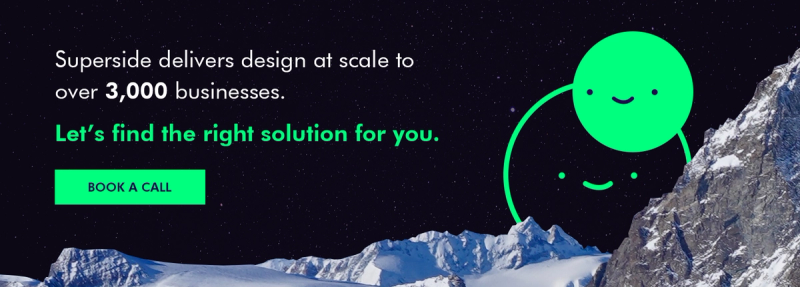
40. Rinse
Why they changed: Along with a website redesign, Rinse, a 30-year-old laundry company, updated their logo. Previously they had blue lettering on a white background that included a water droplet symbol inside a circle. The new design focuses on their monogram and gold lettering which lends an air of sophistication.
What we like: The graphical look for the monogram is modern and different from other monogram logos out there.
41. Chicago Sun Times
Why they changed: The 70-year-old Chicago Sun-Times has gone through many logo transitions, and this new one seeks to simplify and modernize it. Following the trend to sparingly use symbols and highlight the company name, Chicago Sun-Times has better visual hierarchy than their previous logo.
What we like: The paper changed their previous yellow circle symbol to a star that represents the hyphen between Sun and Times. This effective change is fun and simplistic.
42. This American Life
Why they changed: This American Life is a pioneer in podcasts, so when they updated their logo it was important it was optimized for social media use. They added a graphical element—the American flag—to symbolize American life and followed the flat background trend.
What we like: Adding the symbol means This American Life, whose name is quite long, can represent their brand without always spelling out their moniker.
43. MAD Magazine
Why they changed: Mad Magazine hasn’t changed their signature logo in 60 years, so this reveal was a big deal. They changed everything—font, color, style. The quirkiness of Mad is maintained as they drag their brand into the 21st century.
What we like: The new color is bold, and the imperfections of the font maintain the brand’s hilarious appeal.
44. Glamour
Why they changed: Glamour’s 79-year history has included a few logo changes, and this one heralds a retro, old Hollywood feel. They’ve gone against the grain and added a drop shadow. Plus, the font reflects a chicer look.
What we like: The black and white contrast is bold and beautiful, just like the magazine’s brand.
45. AdAge
Why they changed: Previously known as Advertising Age, Ad Age shortened their moniker to match the verbiage used when referring to the industry. They also updated their logo which borrows typeface from their 1930s version that also featured a standout G.
What we like: Shortening their name offered Ad Age the opportunity to simplify and modernize their logo even though they pull from an older version.
46. Book by Cadillac
Why they changed: The goal was to revitalize Cadillac’s brand, and that included changing some of their services’ logos too. This logo was modernized to appeal to Gen X and Y, the company’s target audience.
What we like: The refined, geometric typeface is perfectly juxtaposed against the circle symbol.
47. Battersea Dogs & Cats home
Why they changed: Battersea is a charity in the UK that works with cats and dogs. Their old logo was classy, but dated, and didn’t reflect the fun-loving animals the company works with. Their new logo includes an amusing doggy icon (they also have a cat one), and better showcases the company name.
What we like: Dogs and cats are beloved on the web, so adding the cute symbols appeals to many.
48. Houses of Parliament
Why they changed: The UK Parliament needed to optimize their logo for the web. The traditional gate, crown, and chain visual was simplified (removing the gate studs and cleaning up the lines of the crown) and made equal (the chains are now all circles).
What we like: The new logo is easier on the eyes against a white background, and is much cleaner looking.
49. Wahaca
Why they changed: Wahaca is only 11-years-old, but they have enjoyed prosperity and are now a chain with 25 taco restaurants across the UK. Part of building a chain is creating a logo that is instantly recognizable, so they transitioned from a simple version with just their name to this colorful option that showcases their money-maker: tacos.
What we like: Wahaca released the logo in four fun colors that represent the vibrancy of Mexican culture.
50. FatFace
Why they changed: Possibly the most dramatic change of them all was the transition from the cool, surfer-dude FatFace logo to this modern, high street look. There was a lot of controversy surrounding the change, but once the dust settled, people recognized it as a sophisticated change that follows the evolution of the brand to a respected outdoor clothing option.
What we like: It’s simple and bold and shows a maturity in the company.
Logo design is important for any brand, whether you’re just starting out or in need of a makeover. Superside design services are the very best at merging current trends with your design aesthetic. And we’re available 24/7 with dedicated project managers on stand-by to help you make the transition. We also specialize in visual brand identity design, so if you’re unsure where to start, start with us.
Emanuel is a Content Specialist at Superside. With the knowledge that three languages (and counting) and digital marketing can serve a creator, he has helped B2Bs from multiple industries to write, optimize and scale their content game with compelling pieces that answers questions and solve problems. On Superside, Emanuel streamlines content ideas into powerful articles that guides you on how to use Superside multi-powered services to scale your business to the max.
You may also like these

An expert 7-step brand strategy framework
In an era where businesses are under pressure to produce results quickly, it’s easy to see branding as just another box to check off. However, a well-thought-out brand strategy framework isn’t just a marketing play—it’s a foundational business tool that helps teams prioritize messaging, work more efficiently and create long-term impact.During Superside’s Overcommitted Virtual Summit, branding expert and Twilio VP of Brand Adam Morgan delved into how companies can build brands that stand the test of time. Morgan, a veteran of branding initiatives at Adobe, Splunk and Twilio, provided a wealth of insights on how to approach branding with intention, align brand identity with business goals and ensure it connects deeply with customers. Dive in to learn more about the importance of purpose, audience alignment and strategic execution—all while keeping in mind the challenges of overcommitment and burnout that many creative teams face.Why branding matters more than everThere's a common misconception about branding strategies that they're just about visuals and logos. Morgan emphasized that brand strategy is about creating an emotional and strategic connection between a company and its audience.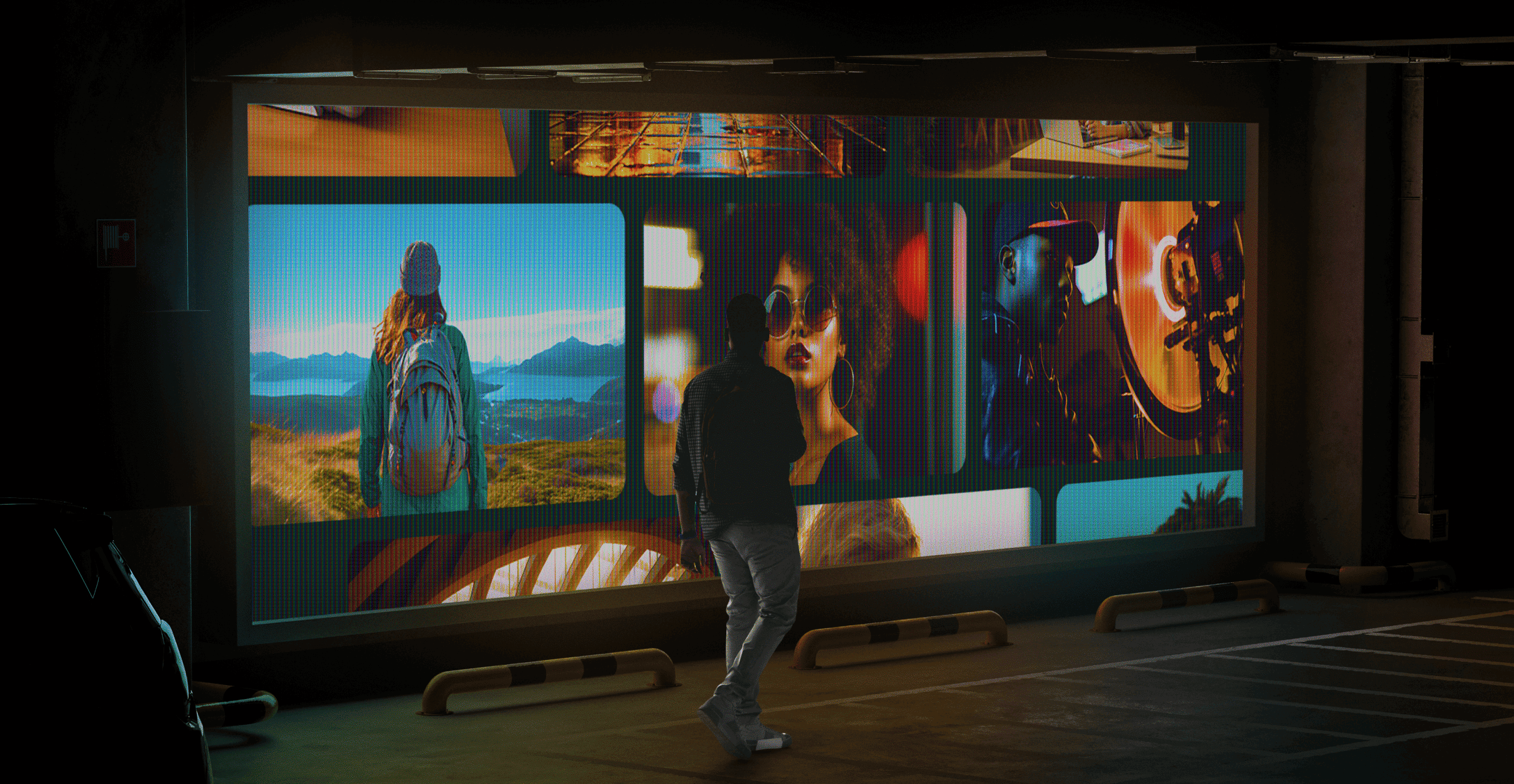
7 top creative support solutions for teams and enterprises
There’s no denying that today’s marketing and creative teams are under more stress than ever. To deliver high-performing, top-quality assets at scale, many teams are getting fewer resources, smaller budgets and tighter deadlines.As an ever-increasing number of brands compete for audience attention, the demand for compelling content is getting higher—and essential for creative teams to meet.It’s no surprise then that in-house marketing and creative teams are turning to advanced creative support solutions to help enhance efficiency, streamline workflows and optimize production processes.From AI-powered design to cloud-based collaboration software and outsourced creative services, these solutions transform how teams work, allowing them to produce more assets faster without compromising quality.Our best advice to teams and enterprises on how to get this right? Make Superside your creative team’s creative team and free up your team to do their best work.
How to find creative partner agencies to boost 2025 strategy
Are your internal creatives battling to keep up as the demand for authentic, trustworthy content grows? For many brands, outsourcing creative makes sound financial sense. Plus, partnering with an experienced creative services team can bring fresh ideas and impressive scalability.80% of customers say that the experience a company provides is just as important as its products or services, meaning that driving great customer experiences is essential in 2025. Once again, creative partnerships pay dividends, as many creative agencies go well beyond KPIs to drive genuine cultural impact and build trust.Unlike traditional agencies, creative partner agencies also typically act as an extension of your team. Work with Superside, for example, and our talented designers will become your creative team’s creative team.



